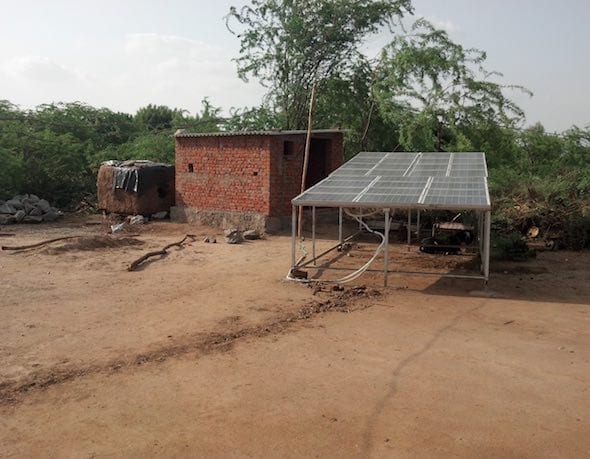
The Indian government has pledged to broaden the roll-out of solar and battery storage to households without power in rural and remote towns and villages, as a part of a newly launched $2.5 billion project to electrify all of the country’s households by the end of 2018.
At the launch of the project on Monday, Indian PM Narendra Modi said around one-quarter of all homes in the country were yet to be electrified, meaning about 300 million of India’s 1.3 billion people are still not hooked up to the grid.
As part of the program, the government will identify households eligible for free electricity connections, with no fee charged for the connection of “poor citizens,” the PM said.
But the majority of the program’s budget – more than 80 per cent – would go towards rural households, where solar power packs of 200-300W will be added with battery banks to un-electrified homes, along with LED lights, a DC fan and a DC power plug, and repair and maintenance for five years.
As PV-Tech reports, Modi’s latest announcement appears to be a major extension of the plan announced last December by former energy minister Piyush Goyal, that more than 16,000 Indian households across 800 remote villages would be given a solar panel, with an eight-hour battery storage backup.
When the government first started rolling out its rural electrification program, known as DDUGJY, there were more than 18,000 villages identified as un-electrified.
The scale of the new plan, and its focus on solar and battery storage, also undermines one of the federal government’s key arguments in favour of digging up and exporting more Australia coal: that it is a vital source of “cheap electricity” for India’s poor.
“India has a massive program of expanding electrification across the country and Australian coal has a very big role to play in that,” Prime Minister Malcolm Turnbull said in April when he visited the sub-continent and met with Indian coal billionaire Gautam Adani, whose company is, still, deliberating its final investment decision on the $21-billion Carmichael coal mine in Queensland’s Galilee basin – Australia’s largest, if built.
But that’s not the view of many reports and energy industry analysts. In February, for instance, a report from The Energy and Resources Institute (Teri) in New Delhi, suggested that renewables and batteries could undercut coal in India in less than a decade, as long as costs of the technologies continued on their current trajectory.
And if that happens, the report adds, it will reduce the country’s carbon dioxide emissions by about 600m tonnes, or 10 per cent, after 2030.
One of the key goals of India’s solar and battery storage roll-out, which will be coordinated by the state-run Rural Electrification Corporation, is to cut use of kerosene in rural and remote areas, which is both a fire risk and a heavy pollutant.
The states are expected to complete the electrification by December 2018.










